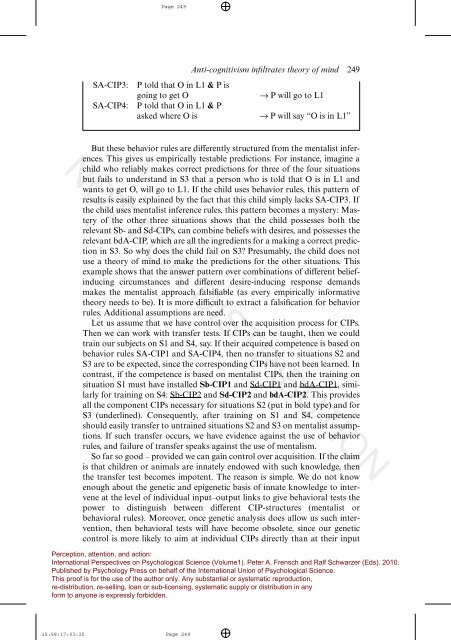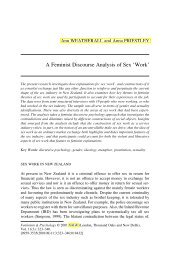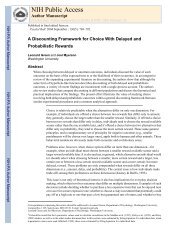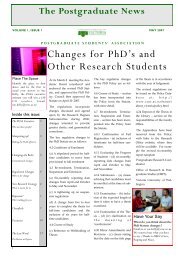Perner 2010.pdf
Perner 2010.pdf
Perner 2010.pdf
You also want an ePaper? Increase the reach of your titles
YUMPU automatically turns print PDFs into web optimized ePapers that Google loves.
Page 249SA-CIP3:SA-CIP4:Anti-cognitivism infiltrates theory of mind 249P told that O in L1 & P isgoing to get O→ P will go to L1P told that O in L1 & Pasked where O is → P will say “O is in L1”But these behavior rules are differently structured from the mentalist inferences.This gives us empirically testable predictions. For instance, imagine achild who reliably makes correct predictions for three of the four situationsbut fails to understand in S3 that a person who is told that O is in L1 andwants to get O, will go to L1. If the child uses behavior rules, this pattern ofresults is easily explained by the fact that this child simply lacks SA-CIP3. Ifthe child uses mentalist inference rules, this pattern becomes a mystery: Masteryof the other three situations shows that the child possesses both therelevant Sb- and Sd-CIPs, can combine beliefs with desires, and possesses therelevant bdA-CIP, which are all the ingredients for a making a correct predictionin S3. So why does the child fail on S3? Presumably, the child does notuse a theory of mind to make the predictions for the other situations. Thisexample shows that the answer pattern over combinations of different beliefinducingcircumstances and different desire-inducing response demandsmakes the mentalist approach falsifiable (as every empirically informativetheory needs to be). It is more difficult to extract a falsification for behaviorrules. Additional assumptions are need.Let us assume that we have control over the acquisition process for CIPs.Then we can work with transfer tests. If CIPs can be taught, then we couldtrain our subjects on S1 and S4, say. If their acquired competence is based onbehavior rules SA-CIP1 and SA-CIP4, then no transfer to situations S2 andS3 are to be expected, since the corresponding CIPs have not been learned. Incontrast, if the competence is based on mentalist CIPs, then the training onsituation S1 must have installed Sb-CIP1 and Sd-CIP1 and bdA-CIP1, similarlyfor training on S4: Sb-CIP2 and Sd-CIP2 and bdA-CIP2. This providesall the component CIPs necessary for situations S2 (put in bold type) and forS3 (underlined). Consequently, after training on S1 and S4, competenceshould easily transfer to untrained situations S2 and S3 on mentalist assumptions.If such transfer occurs, we have evidence against the use of behaviorrules, and failure of transfer speaks against the use of mentalism.So far so good – provided we can gain control over acquisition. If the claimis that children or animals are innately endowed with such knowledge, thenthe transfer test becomes impotent. The reason is simple. We do not knowenough about the genetic and epigenetic basis of innate knowledge to interveneat the level of individual input–output links to give behavioral tests thepower to distinguish between different CIP-structures (mentalist orbehavioral rules). Moreover, once genetic analysis does allow us such intervention,then behavioral tests will have become obsolete, since our geneticcontrol is more likely to aim at individual CIPs directly than at their inputNOT FOR DISTRIBUTIONPerception, attention, and action:International Perspectives on Psychological Science (Volume1). Peter A. Frensch and Ralf Schwarzer (Eds). 2010.Published by Psychology Press on behalf of the International Union of Psychological Science.This proof is for the use of the author only. Any substantial or systematic reproduction,re-distribution, re-selling, loan or sub-licensing, systematic supply or distribution in anyform to anyone is expressly forbidden.15:58:17:03:10Page 249






